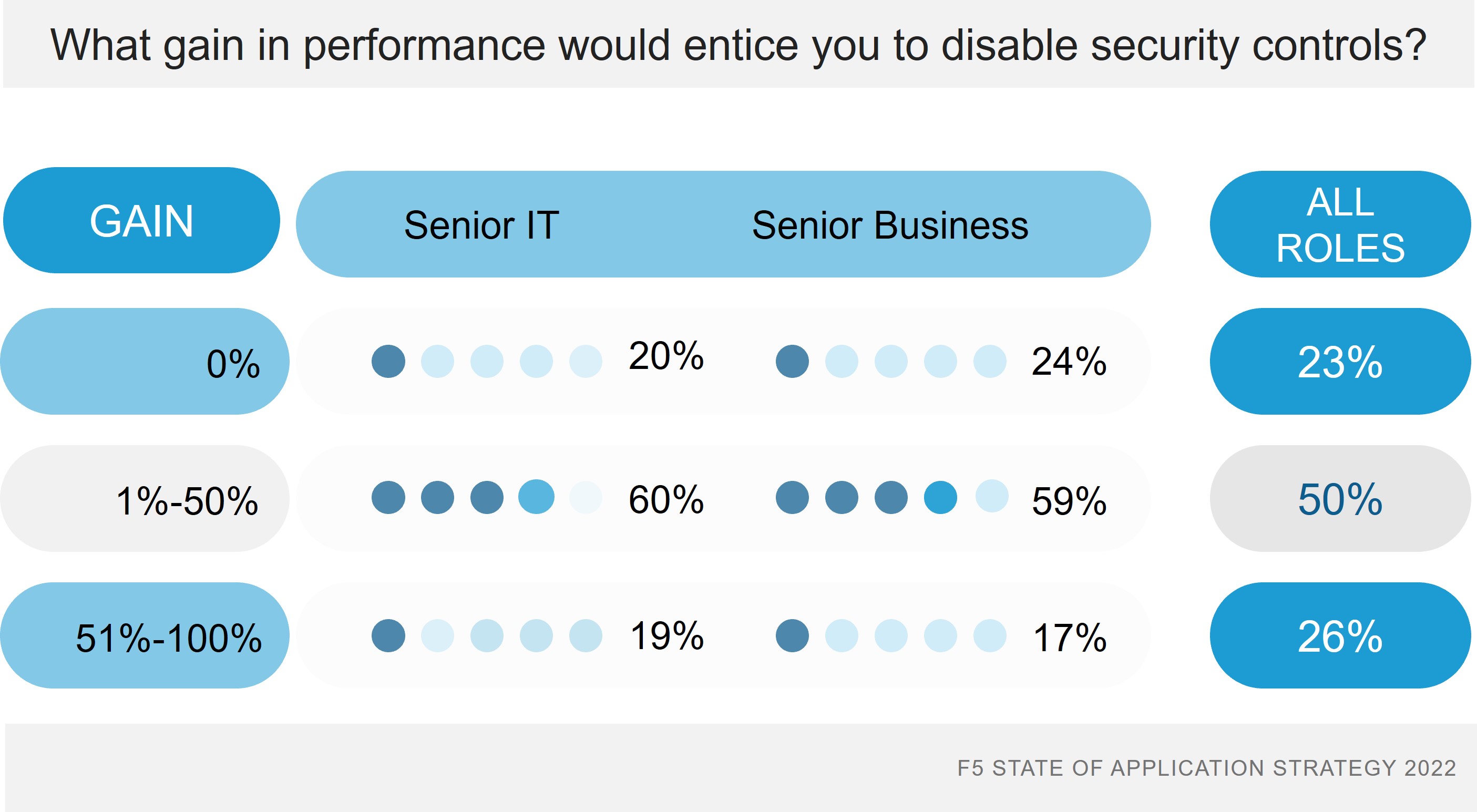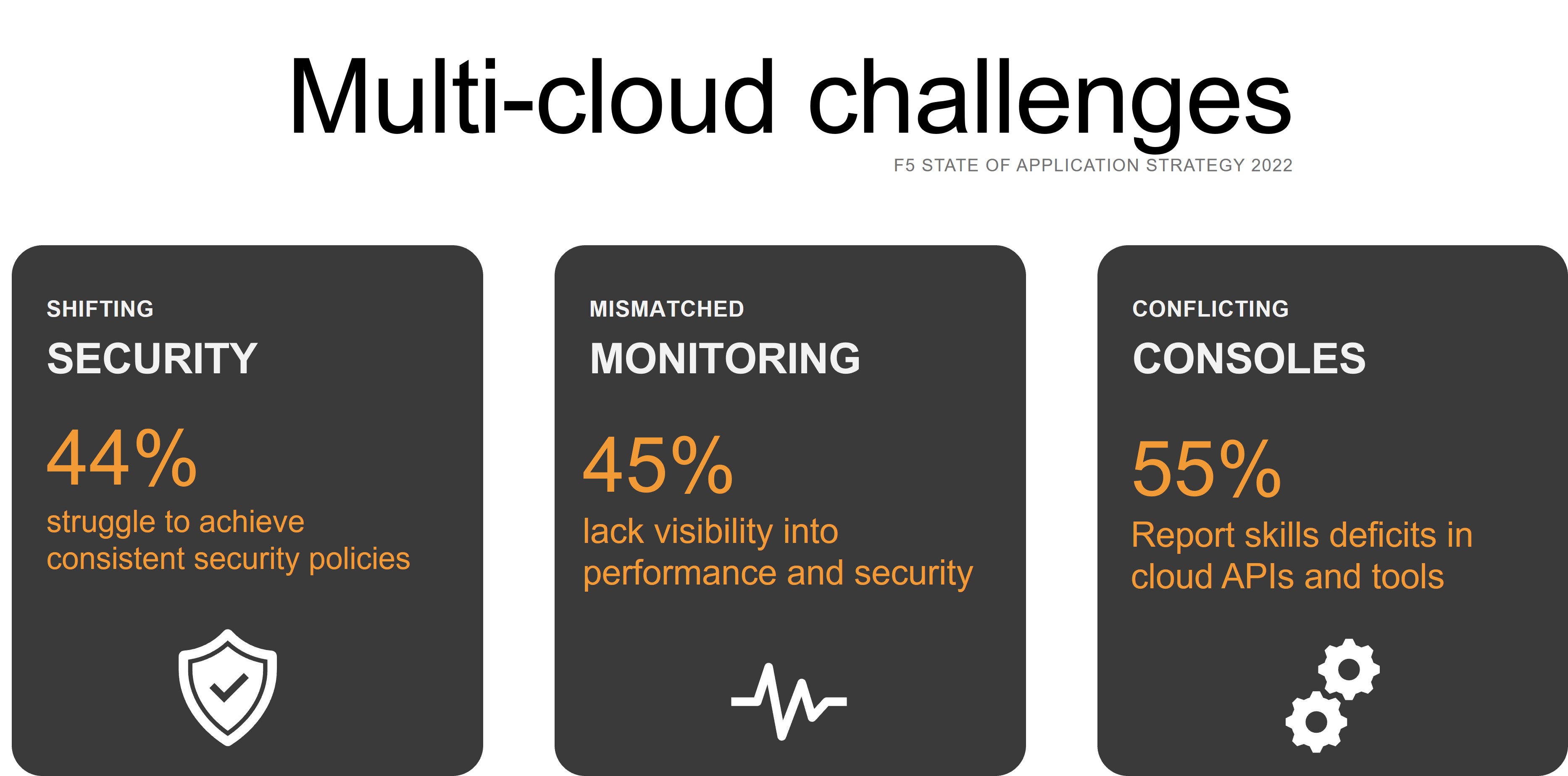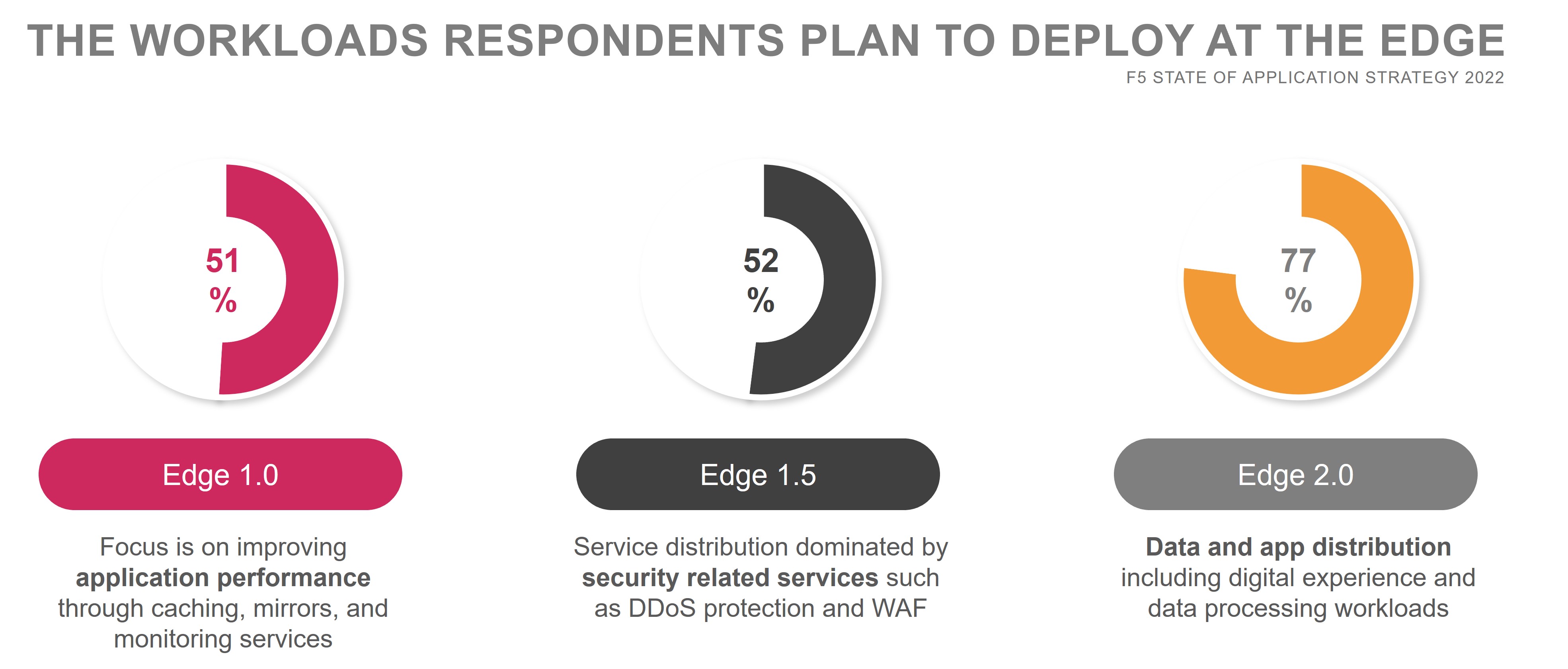État de la stratégie d'application 2022 : Tendances de performance
Alors que les organisations accélèrent leur parcours pour devenir des entreprises numériques, les DSI prennent le volant et lancent le moteur technologique à plein régime pour permettre aux organisations de traverser la deuxième phase de la transformation numérique. Les performances, comme d’habitude, constituent un obstacle majeur à la concrétisation des avantages des stratégies multi-cloud et incitent définitivement les entreprises à s’étendre jusqu’à la périphérie.
J'ai récemment perdu environ une heure de ma vie à suivre des discussions sur le taux de sondage des souris de jeu par rapport à celui d'un contrôleur de console. J'ai appris que même si mon contrôleur Xbox est capable de traiter 24 MIP, il n'interroge toujours les entrées qu'à 125 Hz. Cela signifie qu'il informe le jeu de tout changement environ une fois toutes les 8 millisecondes. À l’inverse, une souris de jeu interroge l’entrée à 1 000 Hz. Il signale un mouvement une fois par milliseconde.
Maintenant, vous pourriez penser que c’est insignifiant. Mais dans le jeu moderne, en particulier dans le monde compétitif, chaque milliseconde compte. Et si vous êtes sur une manette, engagé dans une compétition avec quelqu'un qui utilise une souris, la différence entre une milliseconde et huit millisecondes est une éternité. Au fait, j'ai également découvert que vous pouvez overclocker un contrôleur pour interroger à une vitesse comparable à celle d'une souris si vous l'utilisez pour jouer sur un PC. Les joueurs qui utilisent un contrôleur auront beaucoup plus de mal à combler cet écart de performances.
Les performances sont importantes, et pas seulement pour les jeux. Notre analyse des réponses à l’état de la stratégie d’application 2022 a révélé que les performances ont un impact sur tout, des décisions de sécurité aux stratégies de répartition de la charge de travail. La performance continue de régner en maître.
Le dilemme entre performance et sécurité
C’est peut-être le secret le moins bien gardé de l’ère numérique : les organisations vont, en fait, désactiver les contrôles de sécurité en échange de performances.
Il est évident qu’il y a eu – et qu’il continue d’y avoir – des situations dans lesquelles les services de sécurité sont débordés lors d’une attaque et, pour éviter une panne, ils sont désactivés. Mais c’est un événement assez rare de nos jours, l’expertise en stratégies de mise à l’échelle distribuée répondant parfaitement au scénario dans la plupart des cas, sans perdre les contrôles de sécurité. La question n’est donc pas vraiment « allez-vous désactiver la sécurité pour améliorer les performances », mais plutôt « dans quelle mesure l’amélioration des performances vous inciterait à désactiver les contrôles de sécurité » ?
C’est exactement ce que nous avons demandé.
Étant donné que nous sommes « dans le coup » du secret, nous nous attendions à ce qu’il y ait un point d’inflexion à partir duquel une majorité de répondants désactiveraient effectivement les contrôles de sécurité. Mais nous ne nous attendions pas à une si petite amélioration des performances.
Plus des trois quarts d’entre eux (76 %) désactiveraient les contrôles de sécurité en échange d’une amélioration des performances. Environ deux tiers de ce groupe le feraient pour une amélioration de leurs performances comprise entre 1 et 50 %. Le reste nécessiterait une amélioration plus substantielle – plus de 51 % – avant que les contrôles de sécurité ne soient supprimés.
Lorsque nous avons approfondi la question et examiné les réponses des hauts responsables informatiques et commerciaux (ceux qui ont la capacité de prendre ces décisions), les résultats ont été encore plus surprenants. Près de 60 % des responsables informatiques et commerciaux désactiveraient les contrôles de sécurité pour un gain de performance compris entre 1 et 50 %. Seul un dirigeant décisionnaire sur cinq (20 %) ne pourrait pas être incité à désactiver la sécurité en échange de performances.

Cela ne doit pas nécessairement être considéré comme terrifiant. Cette attitude est plutôt révélatrice d’une vision plus mature de la sécurité dans laquelle l’accent est mis sur la gestion du risque plutôt que sur un état constant de défense et de neutralisation. La sécurité adaptative sera un moyen d’équilibrer la bataille entre sécurité et performance, et nous constatons déjà une évolution vers une préférence pour les méthodes de sécurité plus adaptatives par rapport aux méthodes plus traditionnelles.
Le dilemme entre performance et cloud
La sécurité n’est pas le seul domaine dans lequel nous constatons des conflits avec les performances. L’un des principaux défis à relever dans un environnement multi-cloud a été et reste la cohérence des performances sur l’ensemble des propriétés cloud. Alors que 40 % des répondants le considèrent comme un défi majeur, il est devancé de justesse par 41 % qui ont du mal à migrer des applications entre les clouds, 44 % qui ont du mal à appliquer des politiques de sécurité cohérentes et 45 % qui sont frustrés par un manque de visibilité sur les performances et la sécurité.

Nous ne perdons pas de vue qu’un manque de visibilité sur les propriétés multi-cloud contribue probablement à la difficulté d’obtenir des performances cohérentes. Après tout, si vous ne pouvez pas le mesurer, vous ne pouvez pas non plus l’optimiser, et encore moins établir une expérience numérique cohérente pour les clients et les employés. Et l’une des trois principales informations qui manquent aux répondants ? Vous l’avez deviné, la cause première des dégradations des performances.
Ainsi, vous ne serez pas surpris d’apprendre que « l’exploration des causes profondes » et « l’exploration pour améliorer l’expérience client » sont les deux principaux moteurs des projets d’analyse de données aujourd’hui. Les méthodes de surveillance traditionnelles ne sont pas en mesure de répondre aux besoins des entreprises modernes et à leur dépendance aux signaux numériques pour permettre des opérations en temps réel et une réponse rapide aux changements de conditions dans les propriétés principales et cloud.
Si vous ne pouvez pas mesurer, vous ne pouvez pas le savoir, et si vous ne le savez pas, vous ne pouvez pas le résoudre. L’énigme des performances du cloud est avant tout un problème de silos de statut et de signal ; une condition dans laquelle une multitude de solutions et de services de surveillance stockent les données de santé numériques dans des silos et empêchent les organisations de tirer parti d’une stratégie de données et d’observabilité plus complète.
Malheureusement, une stratégie de données et d’observabilité ne représente que la moitié de la solution. Être capable d’agir rapidement, voire de manière proactive, pour résoudre une situation constitue l’autre moitié. Cela est également remis en question par la nature hétérogène des services et des solutions qui traitent des performances, de la sécurité et de l’évolutivité : sécurité des applications et technologies de distribution. Avec un véritable buffet de solutions et de services répartis entre le cœur de métier et le cloud, il n’existe pas de moyen unique et simple de boucler la boucle entre la connaissance d’un problème et la résolution rapide de celui-ci. Une surveillance inadaptée et des consoles contradictoires continuent d'empêcher de fournir les performances cohérentes nécessaires à des expériences numériques extraordinaires.
La connexion entre performances et avantages
Offrir des expériences numériques extraordinaires est présenté comme l’un des principaux avantages de l’informatique de pointe. Nous avons constaté l’année dernière que les principaux cas d’utilisation prévus pour la périphérie étaient, en fait, liés aux performances. Il n’est donc pas surprenant que les mêmes résultats soient à nouveau obtenus cette année. Seuls 10 % ont indiqué qu’ils n’avaient pas l’intention de déployer quoi que ce soit en périphérie. Pour le reste, la performance est un moteur clé.
Plus de quatre sur dix (42 %) prévoient de tirer parti de l’edge computing pour améliorer les performances des applications. Plus d'un tiers (35 %) ont besoin de la périphérie pour prendre en charge le traitement des données en temps réel avec des exigences de latence inférieures à 20 millisecondes
Cependant, non contentés des cas d’utilisation généraux, nous avons étudié en profondeur les charges de travail spécifiques prévues pour un déploiement en périphérie.
Nous n’avons pas été déçus par les résultats, qui démontrent non seulement une volonté d’améliorer les performances mais aussi la volonté de déployer des charges de travail applicatives en périphérie.

Plus de la moitié (51 %) des charges de travail de périphérie prévues sont liées aux performances des applications et incluent des services de périphérie traditionnels tels que la mise en cache, la mise en miroir et la surveillance. Mais ce qui est plus intéressant, c’est que plus de trois sur quatre (77 %) prévoient de déployer des charges de travail de données et d’expérience numérique à la périphérie. Cette perception de l'edge indique une maturité croissante dans la compréhension du fait que l'évolution de l'edge déplace ses capacités de la distribution de contenu (1.0) vers les services (1.5) et la charge de travail (2.0), presque exclusivement dans le but d'améliorer l'expérience des employés et des clients.
Les performances restent au beau fixe
Les mois que nous passons à analyser les résultats de nos recherches annuelles sont passionnants, parfois surprenants et toujours fascinants. Le fil conducteur de la performance traverse presque tous les aspects de l’informatique et des affaires aujourd’hui, orientant les décisions de déploiement et impactant la manière dont les organisations fonctionnent au cœur, dans le cloud et en périphérie.
La performance reste dominante et, compte tenu du comportement et des attentes de mon plus jeune fils, né dans le monde du numérique, elle restera sur le trône pendant de nombreuses années encore.
Pour en savoir plus, téléchargez votre propre exemplaire de notre rapport sur l’état de la stratégie d’application 2022.
Consultez les blogs associés pour des analyses plus approfondies sur certains sujets :
État de la stratégie d'application 2022 : Déballage de 8 années de tendances ›
État de la stratégie d'application 2022 : La sécurité se transforme en identité ›
État de la stratégie d'application 2022 : La complexité du multi-cloud perdure ›
État de la stratégie d'application 2022 : Il est temps de moderniser les opérations ›
État de la stratégie d'application 2022 : L’avenir des entreprises est adaptatif ›
